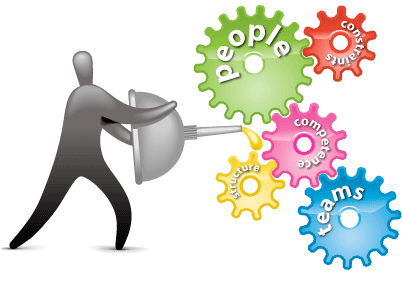I’ve been thinking a great deal lately about psychological safety and the curse of organizational silence. That situation where:
People in all kinds of jobs, all kinds of organizations, all kinds of situations, reach a point where they want to say, “Enough.” They have the same uncomfortable realization: “I should do something about this.” Yet many remain silent. They don’t bring ideas forward.
In looking for ways to expose the system to itself, I have come across what I think might just work.
A team safety check retrospective. I am not sure of the source… I found some notes tucked away in my Evernote stack. (If this was your idea, thanks! Leave a comment so I can give credit where credit is due.)
Running the team safety survey
Have the following question and legend visible to the team:
“How likely am I to bring forward my ideas about change?”
- 5 = No problem, I’ll talk about anything;
- 4 = I’ll talk about almost anything; a few things might be hard;
- 3 = I’ll talk about some things, but others will be hard to say;
- 2 = I’m not going to say much; I’ll let others bring up issues;
- 1 = I’ll smile, claim everything is great, and agree with the managers.
- 0 = I need to leave the room. Right now. Really.
Have stacks of identical-color post-its or index cards and pens available.
Ask participants to choose a number between 1 and 5 that indicates how safe they feel within the group and write it down.
Have participants drop their answers into a hat or some container to keep responses anonymously.
The facilitator tallies up to votes, divides by the number of participants, or tacks them to the wall – creating a visual heat map of the team’s responses.
Acknowledge the results with a simple statement of the facts: Survey says….
- “Safety is high”
- “Safety is medium”
- “Safety is low”
What’s next?
It all depends on what the activity revealed! (However, under no circumstances will it be time for trust falls!)
With high levels of team safety, open conversations will easily happen. The facilitator could move on to brainstorming what increases (catalyzes/nourishes) and what decreases (toxins and inhibitors) safety for the group.
With low levels, it will likely best to rely on silent brainstorming techniques, with ideas going back into the hat to be read out by the facilitator. Asking individual to respond to the prompt:
- “What conditions would need to be in place to create an environment where you would feel safe speaking your mind?” or
- “What do we need to do to create a work environment of care and respect?”
Affinity group the responses – the “nourishers/inhibitors” – using integral quadrants/perspectives:
- I = Personal: This is about “Me” – my psychological, inner world; how I see things, what I experience, my mindset.
- IT = Practices: Refers to the team structure, methods, metrics, processes, decision making patterns, organizational, leadership and team practices
- WE = Relational: A shared vision and interpersonal dynamics among peers; how we interact, what we value together, the team micro-culture
- ITS = Environmental: Everything external to the team systems, including other value streams, handoffs, rules, corporate culture, and policies

- See this Retro Technique for details on catalysts, nourishers, toxins, and inhibitors.
Get the team to tell a story…
See if you can facilitate the team to share their thoughts as narrative.
Use the prompts from Jason Little’s “Story Telling Canvas” as a guide for a storytelling retro.

Deeper modes for exploration of psychological safety issues:
Good luck, and safe journeys!
 Did this article help you out?
Did this article help you out?
Show your appreciation by buying me a virtual coffee.
Help fuel more great content!
Facilitation of a Psychological Safety Retrospective
Below are downloadable PDF’s you can use during facilitation.
Print out onto Avery 5388 Index Cards, post them on the whiteboard.
- Team Safety Check – Avery 5388 Index Cards
- Integral Quadrants – Avery 5388 Index Cards
- Story Telling Retro – Avery 5388 Index Cards
 Did this article help you out? Show your appreciation by buying me a virtual coffee. Help fuel more great content!
Did this article help you out? Show your appreciation by buying me a virtual coffee. Help fuel more great content! 

> I am not sure of the source…
I suspect the original source of the Safety Check is Norm Kerth and https://www.amazon.com/Project-Retrospectives-Handbook-Team-Reviews/dp/0932633447